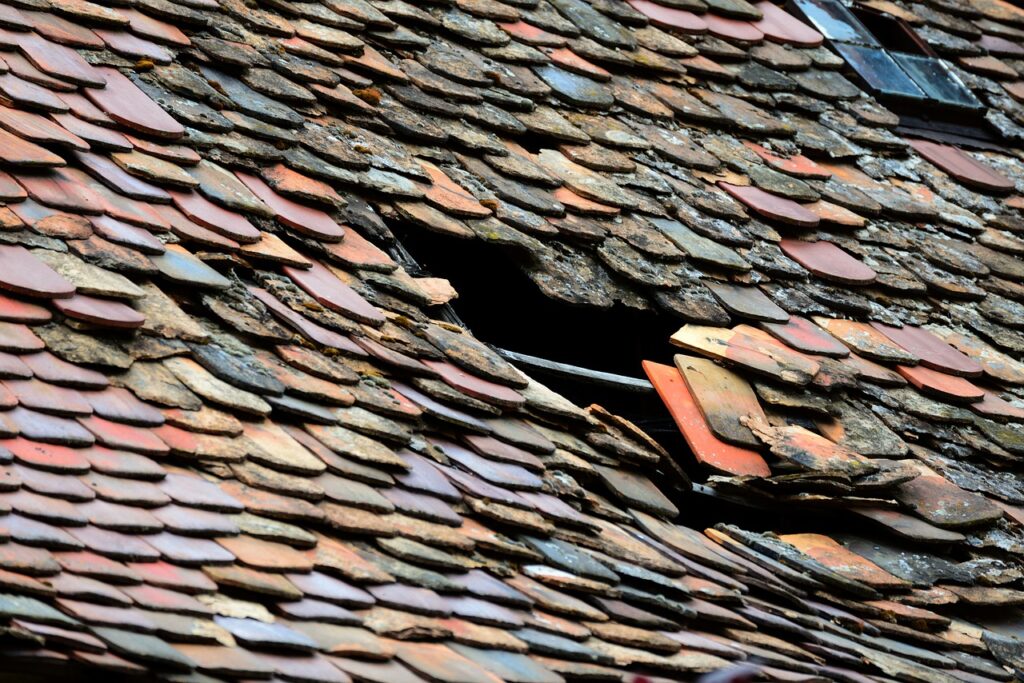How To Address Leaks And Water Damage In Roofs
Are you dealing with pesky roof leaks and water damage? Don't worry, we've got you covered!
In this article, we will guide you through the process of addressing these issues in your roofs, ensuring a dry and safe home.
First and foremost, it's crucial to identify the source of the leaks accurately. We will show you how to assess the extent of water damage and provide temporary solutions for immediate relief.
Once you've gained some respite, we'll delve into the nitty-gritty of repairing those roof leaks, ensuring a long-lasting fix.
But that's not all! We will also share valuable tips on preventing future water damage, saving you time, money, and headaches down the road.
So, grab your tools and get ready to tackle those leaks and water damage like a pro!
Identifying Roof Leaks
If you're unsure where those pesky leaks are coming from, it's time to play detective and start pinpointing the culprits.
The first step is to visually inspect your roof, both from the inside and outside. Look for any signs of water stains, discoloration, or mold growth on your ceilings and walls.
On the outside, check for missing or damaged shingles, cracked flashing, or clogged gutters. Pay close attention to areas where different materials meet, such as chimneys, vents, and skylights, as these are common leak-prone areas.
If you can't find any obvious signs, try simulating the leak with a hose and ask someone to help you identify where the water is entering. Remember, the sooner you find and address the leaks, the less likely you'll face costly water damage in the future.
Assessing the Extent of Water Damage
To accurately gauge the scope of moisture-related issues, it's crucial to thoroughly evaluate the potential harm caused by excessive water exposure to the structure.
Start by inspecting the affected areas for visible signs of water damage, such as stains, discoloration, or peeling paint. Check for soft or sagging spots on the ceiling or walls, as these indicate a more severe problem.
Use a moisture meter to measure the moisture levels in the affected areas and adjacent materials. High moisture readings suggest extensive water damage.
Look for signs of mold or mildew growth, as they thrive in damp environments.
Additionally, assess the condition of insulation and electrical components. Water damage can compromise their effectiveness and pose safety hazards.
By assessing the extent of water damage, you can determine the necessary repairs and prevent further problems.
Temporary Solutions for Immediate Relief
One way to temporarily alleviate the immediate issues caused by excessive water exposure is by implementing quick fixes. These temporary solutions can provide relief until a more permanent fix can be arranged.
Start by locating the source of the leak and using a tarp or plastic sheeting to cover the affected area. Make sure to secure it tightly to prevent further water intrusion.
Additionally, you can use a bucket or a large container to catch any dripping water and prevent it from causing further damage.
Another quick fix is to use a sealant or waterproof tape to seal any small cracks or gaps in the roof. Remember that these temporary solutions are only meant to provide immediate relief, and it's important to address the underlying issue as soon as possible.
Repairing Roof Leaks
Don't worry, you can easily fix those pesky leaks on your roof! The first step in repairing roof leaks is to locate the source of the problem.
Start by inspecting the area where the leak is occurring. Look for any damaged or missing shingles, as well as any cracks or gaps in the roofing material.
Once you have identified the source, you can begin the repair process. One common method is to use roofing cement or sealant to patch the leak. Apply the cement or sealant to the damaged area, making sure to cover it completely.
Allow it to dry and then test for any remaining leaks. If the leak persists, you may need to consult a professional for further assistance. Remember, addressing roof leaks promptly is crucial to prevent further water damage to your home.
Preventing Future Water Damage
Protect your home from costly repairs and devastating consequences by taking proactive measures to prevent future water damage. One of the most effective ways to do this is by regularly inspecting your roof for any signs of wear and tear. Look for missing or damaged shingles, cracked flashing, or clogged gutters. Address these issues promptly to avoid water from seeping into your home.
Additionally, make sure your attic is properly insulated and ventilated to prevent condensation buildup. Trim any overhanging branches to prevent them from rubbing against the roof and causing damage. During heavy rainstorms, consider using sandbags or installing a roof tarp to divert water away from vulnerable areas.
By being proactive and addressing potential issues, you can safeguard your roof and prevent future water damage.
Conclusion

To conclude, addressing leaks and water damage in roofs is crucial to maintain the integrity and safety of your home. By identifying the leaks and assessing the extent of water damage, you can take immediate action to provide temporary relief.
Repairing the roof leaks promptly is essential to prevent further damage. Additionally, implementing preventive measures can help avoid future water damage issues.
Remember, addressing these issues promptly will save you time, money, and ensure the longevity of your roof. So, don't delay in taking the necessary steps to address leaks and water damage in your roofs.

